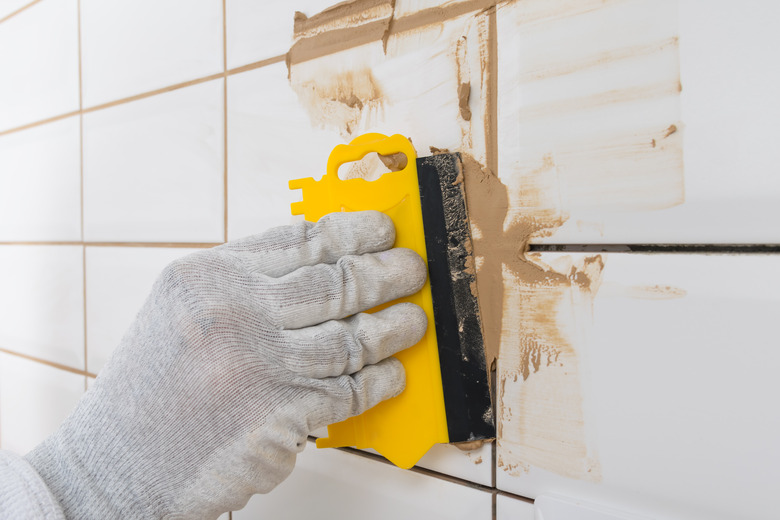How To Get Grout Off Hands
We may receive a commission on purchases made from links.
After you've finished laying tiles on a floor, wall, or countertop, you have to seal the gaps between them with grout, and the type of grout you use depends on the size of the gap between the tiles and the tile material. Sanded grout is the best option for gaps larger than about 1/8 inch, whereas for narrow gaps, you have a choice between unsanded or epoxy grout.
It's virtually impossible to work with any of these materials without touching them, and if you aren't wearing tight-fitting gloves, you'll get some on your hands. Removing grout from your hands isn't difficult, but you should do it promptly and frequently while working, especially if you're using sanded or unsanded grout. These cementitious grouts contain Portland cement, which can cause mild to severe skin burns.
How To Remove Cementitious Grout
How To Remove Cementitious Grout
The gloves you're wearing while grouting should be tight-fitting gloves because it's all too easy for grout to fall behind loose-fitting ones when you're slapping the material around with a trowel and grout float. When you add water to grout, the Portland cement in it turns to calcium hydroxide, which has a pH of 12 (almost as high as lye) and causes burns, and the longer it stays in contact with your skin, the more severely it burns. So, wearing no gloves and cleaning your hands frequently is safer than wearing loose gloves that can trap the grout against your skin.
To clean grout off your hands, wipe off as much as you can with a dry cloth and then put your hands under running water to clean off the residue. If your skin is already turning red and you feel the pain of a skin burn, avoid using water, which will just reactivate the dried grout and compound the problem. Instead, wash the area with a mildly acidic solution, such as diluted vinegar or lemon juice, to neutralize what residue still remains.
How To Remove Epoxy Grout
How To Remove Epoxy Grout
Epoxy grout won't burn your skin the way cementitious grout will, but it's much stickier and shouldn't be allowed to dry on the skin. If the grout is still fresh, you can usually wash it off with soap and water.
Once the grout has cured, it's more difficult to remove, but it becomes easier if you rub it with a cotton ball soaked in vinegar. Vinegar won't dissolve epoxy, but it will soften it enough for you to be able to peel it off. You can also use citrus-based soap, such as Gojo, which is an especially good choice because it contains pumice, and the abrasive action will loosen the epoxy bond. Apply the soap full strength to your hands and rub the epoxy vigorously. It may come off without any more effort, but be prepared to peel and pull at some of the softened epoxy until it's gone.
How To Get Grout Off Tools
How To Get Grout Off Tools
Like mortar or cement mix, cementitious grout is more difficult to remove from your tools after it dries and cures, so the key to easy removal is to get it while it's fresh. Scrape excess grout from your trowel or grout float and then hold the tools under running water and brush off the residue with a scrub brush. If the grout hardens, chip off what you can and then use a dry brush to remove the residue.
Epoxy grout is also easier to remove when it's fresh, but it isn't water soluble, so you have to remove it with a dry cloth or a cloth soaked in a solvent, such as alcohol or lacquer thinner. If you let epoxy grout cure on your tools, it can be very difficult to remove. Scrape as much as you can with a putty knife and then immerse the tools in a solvent. Ideally, it will soften the material enough to allow you to scrape off the rest.
